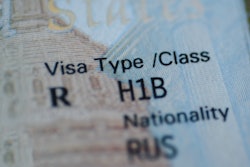Temperature measurements are among the most common data logging applications found across a broad variety of industries including medical monitoring, cold chain integrity, machine monitoring, and many more.
Four main types of temperature sensors are used with data loggers, and finding the right type can seem like a lengthy decision.
The Applications Specialists at CAS DataLoggers have put together this quick guide to outline each sensor type and help you choose which one is best suited for your specific application.
are the most common type of temperature sensor and are widely used where cost, simplicity, and wide operating range are paramount and extremely high accuracy is not required. Semiconductor devices are similarly low-cost and provide an output voltage or current proportional to temperature, with a limited operating range and accuracy comparable to thermocouples. RTDs and thermistors provide a change in resistance that is related to temperature, and while they offer higher accuracy than thermocouples, RTDs have a more limited operating range.
1. Thermocouples are the most typically used and also one of the least expensive sensors available. A thermocouple is nothing more than 2 dissimilar metal wires of very specific alloys, fused together at a single point. A thermocouple produces an output voltage (typically at the millivolt level) related to the temperature. The data logger measures the voltage and then applies a calibration equation to convert the voltage to temperature.
The data logger also incorporates a cold junction reference to compensate for any offset voltage that occurs at the connections between the thermocouple wires and the data logger, such as with dataTaker Series 3 dataloggers which all offer this feature. A thermocouple temperature measurement actually involves multiple voltage measurements of the thermocouple and reference junction as well as scaling the voltage to temperature and compensating for the reference temperature. Because of variations in the composition of the thermocouple wire, typical thermocouple accuracies are on the order of 1-2°F, although special composition wires with reduced errors are also available.
Consider thermocouples when you just want a low-cost device that’s easy to use.
Because of the very low voltages involved with thermocouple measurements, their loud noise is often an issue, particularly in industrial environments or where long cable runs are required. There are 2 popular methods of reducing measurement noise:
- Use shielded thermocouple wire - Thermocouple wire is available with an extra layer of electrical shielding around the conductors to reduce the effects of electrical interference from nearby equipment. For optimal performance, this shield should be tied to a good electrical or earth ground at one end only.
- Use a temperature transmitter - A number of manufacturers provide small temperature transmitters that take a standard thermocouple input and provide a 4-20 mA output that can then be measured with the data logger. These are extremely useful if you have very long cable run between the measurement point and the data logger. The 4-20 mA current signal is much less susceptible to noise than the mV level thermocouple output. Additionally, it's often not much more expensive to use a transmitter because of the reduced cost of standard cabling for 4-20 mA signals compared to using shielded thermocouple wire.
2. Semiconductor sensors incorporate a solid state device (such as a diode or voltage reference) that has a well-established voltage vs temperature characteristic along with signal processing electronics to generate a voltage or current output that is proportional to temperature. For example, the Analog Devices AD592 transducer provides an output current of 1µA/K with an output of 248 µA at -25°C. These devices only require a simple voltage or current measurement and linear calculation to scale the signal to temperature.
Consider using semiconductors when price is a factor and you have a very specific temperature range in mind.
3. An RTD sensor is a device whose resistance increases linearly with temperature. The most common RTD consists of a fine platinum wire wound around a cylinder, but nickel and copper wire are also used in some cases. The resistance vs temperature curve has a very specific slope and the RTD is made so that it has a specific resistance at 0°C, with 100 Ω being the most common value. To measure temperature, the data logger will source a known current through the RTD and measure the resulting voltage from which it can calculate the resistance. Finally, using the slope of the resistance vs temperature curve and the 0°C resistance, the data logger can calculate the temperature. RTDs are typically more stable and accurate than thermocouples, but at the expense of a more limited operating range.
Consider RTD sensors when you need high-precision measurements for a narrow temperature window.
4. Thermistors are similar to RTDs (they’re devices whose resistance changes with temperature) but their resistance change is highly non-linear. Because of this characteristic, thermistors can offer very accurate temperature measurements, down to an accuracy of 0.01°C, but only over a very limited temperature range (typically -40°C to 150°C). Like RTDs, thermistors are designed to have a specific resistance at 0°C -- 2252 Ω is a common value -- and each family of thermistors has a specific resistance vs temperature characteristic that the data logger must be able to accommodate.
Consider using thermistors when you need to record at very high accuracy without worrying about sensor cost.
Examples of temperature dataloggers which can read the signals from these sensors include portable, power over Ethernet, and wireless models. Whether you need a simple single-channel unit to log temperature or a multi-channel system to log several temperature inputs and other parameters at the same time, you can find a data logger to meet your exact needs.























